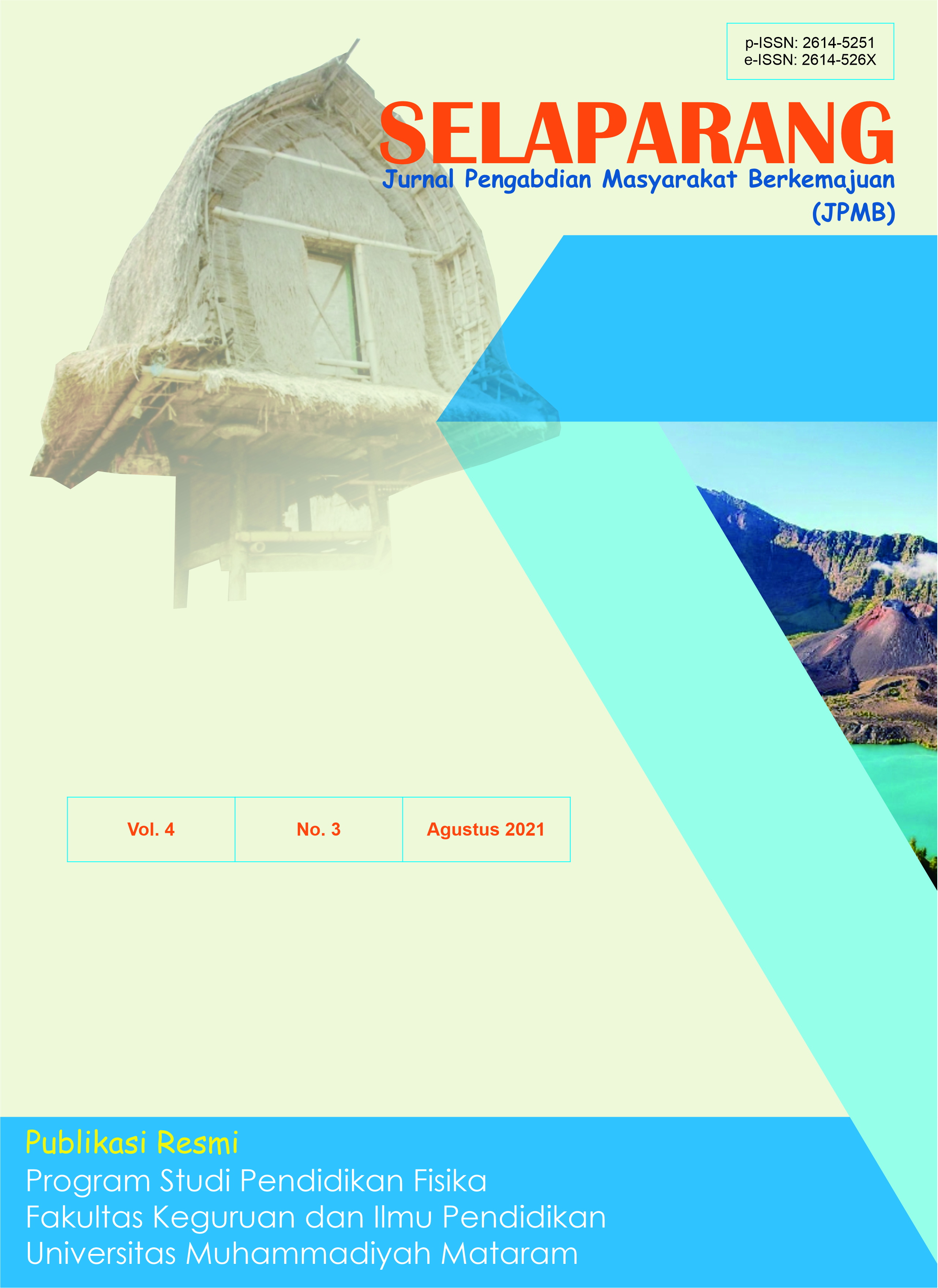PENGOLAHAN SAGU MENJADI SINOLEDENGANVARIAN RASA DI MASYARAKAT TANA LUWU: SEBAGAI UPAYA PENAMBAHAN EKONOMI SELAMA PANDEMI COVID-19
DOI:
https://doi.org/10.31764/jpmb.v4i3.5389Keywords:
sago flour, sinole, economic income.Abstract
ABSTRAK
Tepung sagu adalah tepung yang berasal dari teras batang pohon sagu. Tepung sagu biasa digunakan sebagai salah satu bahan baku kue atau penganan lainnya. Pembuatan kue, sagu biasanya digunakan sebagai bahan pengental karena tepung ini bersifat lengket. Tepung sagu kaya dengan karbohidrat (pati) namun sangat miskin gizi lainnya. Ini terjadi akibat kandungan tinggi pati di dalam teras batang maupun proses pemanenannya. Sagu merupakan makanan pokok bagi masyarakat Indonesia seperti Maluku, Papua yang tinggal di pesisir dan banyak dijumpai di daerah Sulawesi Selatan khususnya di kota Palopo, dan Kabupaten Luwu yang dikenal dengan nama Sagu. Sagu dimakan dalam bentuk papeda, semacam bubur, atau dalam bentuk-bentuk yang lain. Sagu sendiri dijual sebagai tepung curah maupun yang dipadatkan dan dikemas dengan daun pisang. Selain itu, saat ini sagu juga diolah menjadi kue berbagai rasa seperti sinole. Jika usaha ini ditekuni dengan baik, maka akan memberikan kontribusi pendapatan bagi masyarakat Luwu dimasa pandemi Covid-19. Untuk itu, dalam memberikan kontribusi kepada masyarakat, semoga dengan adanya edukasi pengolahan sagu ini, mampu memberikan pemahaman kepada masyarakat bahwa sagu bisa diolah menjadi berbagai varian rasa sehingga hal ini menjadi referensi bagi masyarakat agar dapat memanfaatkan Sumber Daya Alam yang ada di daerahnya yaitu sagu menjadi nilai ekonomi.
Â
Kata Kunci: tepung sagu; sinole; penambahan ekonomi.
Â
ABSTRAK
Sago flour is flour that comes from the terrace of the sago palm tree. Sago flour is commonly used as a raw material for cakes or other snacks. In making cakes, sago is usually used as a thickening agent because this flour is sticky. Sago flour is rich in carbohydrates (starch) but very poor in other nutrients. This occurs due to the high starch content in the stem terraces and the harvesting process. Sago is a staple food for Indonesian people such as Maluku, Papua who live on the coast and can be found in South Sulawesi, especially in the city of Palopo, and Luwu Regency which is known as Sago. Sago is eaten in the form of papeda, a kind of pulp, or in other forms. Sago itself is sold as bulk flour or compressed and packed with banana leaves. In addition, at this time sago is also processed into cakes of various flavors such as sinole. If this business is weel pursued, it will contribute to income for the people of Luwu during the Covid-19 pandemic. For this reason, in contributing to the community, hopefully with this education on sago processing, it will be able to provide an understanding to the community that sago can be processed into various flavors so that this becomes a reference for the community so that they can take advantage of the existing natural resources in their area, namely sago. economic value.
Â
Keywords: sago flour; sinole; economic income.
References
Anton Djuwardi. (2001). Cassava Solusi Pemberagaman Kemandirian Pangan. Grasindo. Jakarta
Flach, M. (1996). Sago Palm. International Plant Genetic Resourches Institute (IPGRI) Promoting The Concervation and Use Underulitized and Neglected Crops, 13. IPGRI, Italy and IPK Germany.
Hayati, N., R. Purwanti dan A. Kadir W. Preferensi Masyarakat Terhadap Makanan Berbahan Baku Sagu (Rottb) Sebagai Alternatif Sumber Karbohidrat Di Kabupaten Luwu Dan Luwu Utara Sulawesi Selatan. JURNAL Penelitian Sosial dan Ekonomi Kehutanan, 11 (1): 82 – 90
Hasbi, A. R dan Sari, H. (2020). Atribut Produk yang Dipertimbangkan dalam Pembelian Olahan Sagu
di Kota Palopo. Jurnal Ilmu Pangan dan Hasil Pertanian, 4 (1): 7-14.
Ishizaki, A. (1997). Concluding Remarks for the Sixth International Sago Symposium at Riau, Indonesia. Sago Communication 8 (pp. 22–25). Japan: Tsukuba Sago Fund.
Kanro, M. Z., A. Rouw, A. Widjono, Syamsuddin, Amisnaipa, dan Atekan. (2003). Tanaman Sagu dan Pemanfaatannya di Propinsi Papua. Jurnal Litbang Pertanian, 22(3): 116-124
Karim, A. A., A. T. Pei-Lang, D.M.A. Manan, and I.S.M. Zaidul. (2008). Starch from the Sago (Metroxylon sagu) Palm Tree—Properties, Prospects, and Challenges as a New Industrial Source for Food and Other Uses. Comprehensive Reviews in Food Science and Food Safety Vol.7
Pei-Lang, A.T., A.M.D. Mohamed and A.A. Karim. (2005). Sago Starch and Composition of Associated Components in Palms of Different Growth Stages. Carbohydrate Polymers 63 (2006) 283–286
Radley, J.A. (1976). The Minor Starches of Commerce: The Manufacture of Rice, Arrowroot and Sago Starch, Starch production technology, Applied Science Publishers Ltd, London (1976), pp. 229–246.
Sari, Harmita, dkk. (2021). Integritas Pendidikan Menuai Wirausaha Di Era Pandemi Desa
Buntu Karya Kecamatan Luwu Kabupaten Ponrang Selatan
Provinsi Sulawesi Selatan. Jurnal SELAPARANG. Jurnal Pengabdian Masyarakat Berkemajuan, 4 (2): 34-40.
Downloads
Published
Issue
Section
License
The copyright of the received article shall be assigned to the journal as the publisher of the journal. The intended copyright includes the right to publish the article in various forms (including reprints). The journal maintains the publishing rights to the published articles.

Selaparang : Jurnal Pengabdian Masyarakat Berkemajuan is licensed under a Creative Commons Attribution-ShareAlike 4.0 International License.

